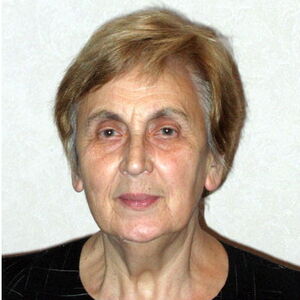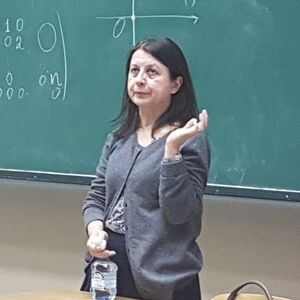Диссертация (1140002), страница 28
Текст из файла (страница 28)
Kuhl C.K., Schild H.H. Dynamic image interpretation of MRI of breast // J.Magn.Reson. Imaging. – 2000. – Vol. 12. – № 6. – P. 956 – 974.137. Kuhl C.K., Schrading S., Leutner C.C. et al. Mammography, breast US and MRIfor surveillance of women at high familial risk for breast cancer. // J. Clin. Oncol. –2005. – Vol.
23 (33). – P. 8469 – 8476.177138. Lauritzen C. Moglichkeiten der Pravention des Mammakarzinoms. Zbl. Gynekol.– 2002. – Vol. 124. – № 5. – S. 269 – 279.139. Leach M.O., Boggis C.R., Dixon A.K. et al. Screening with magnetic resonanceimaging and mammography of a UK population at high familial risk of breast cancer: aprospective multicentre cohort study (MARIBS). // Lancet. – 2005. – Vol.
365. – P.1769 – 1778.140. Lei, J., Yang, L., Zhang. Diagnostic accuracy of digital breast tomosynthesisversus digital mammography for benign and malignant lesions in breasts: a metaanalysis / P. // European radiology. – 2014. – Vol. 24 (3). – Р. 595–602.141. Levin DC, Parker L, Schwartz GF, Rao VM. Percutaneous needle vs surgicalbreast biopsy: previous allegations of overuse of surgery are in error. J Am Coll Radiol2012; 9:137.142.
Lichtenstein P., Holm N. V., Verkasalo P. K. Environmental and heritable factorsin the causation of cancer-analyses of cohorts of twins from Sweden, Denmark, andFinland // N. Engl. J. Med. – 2000. – Vol. 343. – № 2. – P. 78 – 85.143. Ligibel JA. Obesity and its impact on breast cancer / Ligibel JA, Strickler HD //Am Soc Clin Oncol Educ Book. – 2013.
– Р. 52–59.144. Loughran C.F., Keeling C.R. Seeding of tumour cells following breast biopsy: aliterature review//Br. J. Radiol. – 2011. – Vol.84. – №1006.– P.869 – 874.145. Mario J., Venkataraman S., Dialani V., Slanetz P. Benign Breast Lesions ThatMimic Cancer: Determining Radiologic-Pathologic Concordance // AppliedRadiology. – 2015. – Vol. 44. – №9.
Р. 28– 32.150. Melnikow J., Fenton J., Whitlock E. et al. Supplemental screening for breastcancer in women with dense breasts: A systematic review for the U.S. PreventiveServices Task Force. Ann Intern Med. 164:268-278, 2016.151. . Meng W., Zhang G., Wu C., Wu G., Song Y. Preliminary resultsof acousticradiation force impulse (ARFI) ultrasound imaging of breast lesions. // Ultrasound MedBiol. – 2011. – Vol. 37(9).
– P. 1436 – 1443.178151. Micheli A., Muti P., Secreto G., Krogh V. et al. Endogenous Hormones andBreast Cancer Collaborative Group. Sex hormones and risk of breast cancer inpremenopausal women: a collaborative reanalysis of individual participant data fromseven prospective studies. Lancet. 2013. – Vol.14.– №10. – Р.1009-1019.152. Nightingale K., Bentley R., Trahey G. Observations of tissue response to acousticradiation force: opportunities for imaging. // Ultrason Imaging. – 2002.
– Vol. 24. – P.129 – 138.153. Nunes L.W., Schnall M.D., Orel S.G.: Update of breast MR imaging architecturalinterpretation model. // Radiology. – 2001. – Vol. 219. – P. 484 – 494.154. Oberaigner W., Buchberger W., Frede T., Daniaux M., et al. Introduction oforganized mammography screening in Tyrol: results of a one-year pilot phase. // BMCPublic Health. – 2011. – Vol. 11. – № 673.
– P. 268.151. Onstad M., Stuckey A. Benign breast disorders. Obstet Gynecol Clin North Am2013. - №40 (3). Р. 459–473.152. Ozdemir A., Oznur J. J., Vural G. et al. Mammography, ultrasonography and TL201 scintigraphy in the evaluation of palpable and nonpalpable breast lesions: acorrelative study. // Eur. J. Radiology. – 1997. – Vol. 24. – № 2. – P. 145 – 154.153.
Park S.K., Kim Y., Kang D., Jung E.-J., Yoo K.-Y. Risk Factors and ControlStrategies for the Rapidly Rising Rate of Breast Cancer in Korea. // J. Breast Cancer. –2011. – Vol. 14. – № 2. – P. 79 – 87.154. Peart O. Positioning Challenges in Mammography // J. Radiologic technology. –2014. – Vol. 85. – № 4. – Р.
417 – 443.155. Pijnappel R.M., Peeters P.H. M., M. van den Donk, Holland R., Hendriks J. H.Diagnostic strategies in non-palpable breast lesions. // Eur J Cancer. – 2002 – Vol.38(4). – P. 550 – 555.156. Pisano E.D., Hendrick R.E., Yaffe M.J. et al. Diagnostic accuracy of digitalversus film mammography: exploratory analysis of selected population subgroups inDMIST. // Radiology. – 2008.
– Vol. 246. – Р. 376 – 381.179157. Pisano E.D., Yaffe M.J. Digital mammography. // Radiology. – 2005. – Vol. 234.– Р. 353 – 356.158. Porter P. "Westernizing" women's risks? Breast cancer in lower income countries.// N. Engl. J. Med. – 2008. – Vol. 358. – № 3. – P. 213 – 216.159.
Rafferty E.A., Durand M.A., Conant E.F., et al. Breast Cancer Screening UsingTomosynthesis and Digital Mammography in Dense and Nondense Breasts. //JAMA. –2016. – Vol. 315. – №16. –Р. 1784 – 1786.160. Rigby J.E., Morris J.A., Lavelle J. Stewart M., Gatrell A.C.// Can physical traumacause breast cancer? //Eur. J. Cancer Prev. – 2002. – Vol. 11.– №3. – Р.
307-311.161.Rominger М., Wisgickl С., Timmesfeld N. Breast microcalcifications as typedescriptors to stratify risk of malignancy: a systematic review and meta-analysis of10665 cases with special focus on round/punctate microcalcifications.// FortschrRöntgenstr. – 2012. Vol. 184. – №12. – Р. 114 – 115.162.
Rosen E.L., Baker J.A., Soo M.S. Malignant lesions initially subjected to shortterm mammographic follow-up. // Radiology. – 2002. – Vol. 223. – P. 221 – 228.163. Rosen P. P., Shin S. J.Excisional biopsy should be performed if lobularcarcinoma in situ is seen on needle core biopsy. // Archives of pathology & laboratorymedicine. – 2002. – Vol. 126 (6). – P. 697 – 701.164. Schnall M.D., Blume J., Bluemke D.A. et al. MRI detection of distinct incidentalcancer in women with primary breast cancer studied in IBMC 6883.
// J Surg Oncol. –2005. – Vol. 92. – P. 32 – 38.165. Schousboe J.T., Kerlikowske K., Loh A., Cummings S.R. Personalizingmammography by breast density and other risk factors for breast cancer: analysis ofhealth benefits and cost-effectiveness. // Ann Intern Med. – 2011. – Vol. 155. – № 1. –P. 10 – 20.166. Sickles E.A. Management of probably benign breast lesions. // Radiol Clin NorthAm.
– 1995. – Vol. 33(6). – P. 1123 – 1130.167. Sickles E.A. Periodic mammographic follow-up of probably benign lesions:results in 3184 consecutive cases. // Radiology. – 1991. – Vol. 179 (2). – P. 463 – 468.180168. Silverstаin M.J. Current status of the Van Nuys prognostic index for patients withductal carcinoma. // Semin Breast Disease. – 2000. – Vol. 3. – № 4. – P.
220 – 228.169. Skaane P., Hofvind S., Skjennald A. Randomized trial of screen-film versus fullfield digital mammography with soft-copy reading in population-based screeningprogram: follow-up and final results of Oslo II study. // Radiology. – 2007. – Vol. 244.– Р. 708 – 711.170. Skaane P., Young K., Skjennald A. Population-based mammography screening:comparison of screen-film and full-field digital mammography with soft-copy reading Oslo I Study. // Radiology. – 2003. – Vol. 229. – P. 84 – 87.171.Smetherman D., Gowharji L. Clinical Images: Radial Scar of the Breast. //Ochsner J.
– 2015. – Vol. 15. – № 3. – Р. 219 – 222.172. Stereotactic and sonographic large-core biopsy of nonpalpable breast lesions:results of the Radiologic Diagnostic Oncology Group V study. /Fajardo L.L. Pisano EDCaudry D.J. et al. // Acad Radiol. – 2004. – Vol. l (3). – P.
293 – 308.173. Tabar L., Vitak B., Chen T. H.-H., Yen A. M.-F., et al. Swedish Two-CountyTrial: Impact of Mammographic Screening on Breast Cancer Mortality during 3Decades // Acta Radiol. – 2011. – № 52. – Р. 1061 – 1063.174. Takayoshi Uematsu, Masako Kasami, Sachiko Yuen Usefulness and limitationsof the Japan Mammography Guidelines for the categorization of microcalcifications. // JRadiol. – 2009.
– Vol. 10. – P. 450 – 454.175. Tanter M., Bercoff J., Athanasiou A., Deffieux T., Gennisson J.L. et al.Quantitative assessment of breast lesion visco elasticity: initial clinical results usingsupersonic shear imaging. // US Med Biol. – 2008. – Vol. 34. – P. 1373 – 1386.176. Teifke A., Hlawatsch A., Beier T. et al. Undetected malignancies of the breast:dynamic contrast-enhanced MR imaging at 1.0 T.
// Radiology. –2002. – Vol. 224. – P.881 – 888.177.Tehrani F., Mansournia M., Solaymani-Dodaran M., Azizi F. Age-specifi cserum anti-M ü llerian hormone levels: estimates from a largepopulation-based sample//181CLIMACTERIC 2014;17:591–597// International Menopause Society Revised (датаобращения 15.12.16г.)178.Tozaki M., Isobe S., Fukuma E. Preliminary study of ultrasonographic tissuequantification of the breast using the acoustic radiation force impulse (ARFI)technology.
// Eur J Radiol. – 2011. – Vol. 80(2). – P. 182 – 187.179. Varas X., Leborgne J., Leborgne F., Mezzera J., Jaumandreu S. et al. Revisitingthe mammographic follow-up of BI-RADS category 3 lesions. // AJR. – 2002. – Vol.179. – P. 691 – 695.180. Wanebo H.J., Huvos A.J., Urban J.A. A treatment of minimal breast cancer. //Cancer.
– 1974. – Vol. 33. – P. 349 – 357.181. Wapnir I., Dignam J., Fisher B., Mamounas E., Anderson S et al. Long-TermOutcomes of Invasive Ipsilateral Breast Tumor Recurrences After Lumpectomy inNSABP B-17 and B-24 Randomized Clinical Trials for DCIS. // J Natl Cancer Inst. –2011. – Vol. 103. – P. 478 – 488.182. Zhi H., Ou B., Luo B., Feng X., Wen Y., Yang H. Comparison of ultrasoundelastography, mammography, and sonography in the diagnosis of solid breast lesions. //J Ultrasound Med. – 2007. – Vol.
26. – P. 807 – 815.183. Zins K, Mogg M, Schneeberger C, Abraham D, Schreiber M: Analysis of thers10046 Polymorphism of Aromatase (CYP19) in Premenopausal Onset of HumanBreast Cancer. Int J Mol Sci 2014, 15:712–724184. Youk J.H., Kim E-K. Ko K.H. et al. Asymmetric mammographic findings basedon the fourth edition of BI-RADS: types, evaluation, and management. RSNA;RadioGraphics2009;обращения: 15.08.2016).29(1):http://pubs.rsna.org/toc/radiographics/29/1(дата.
















